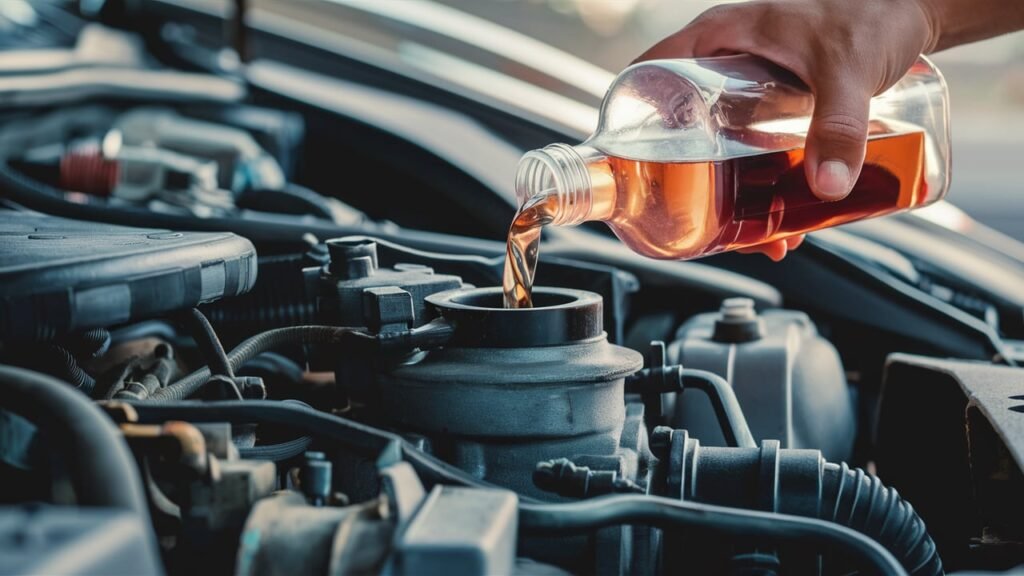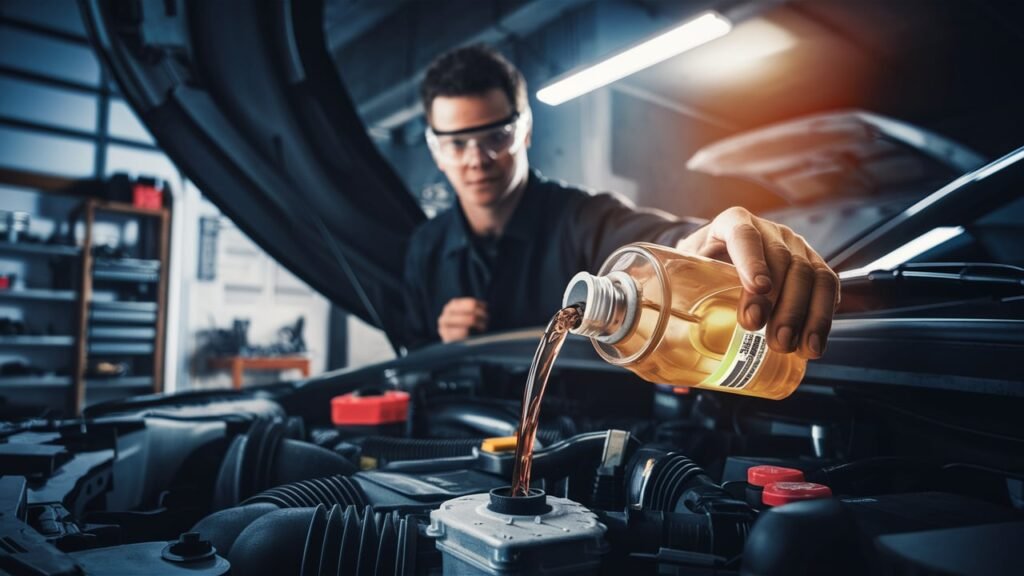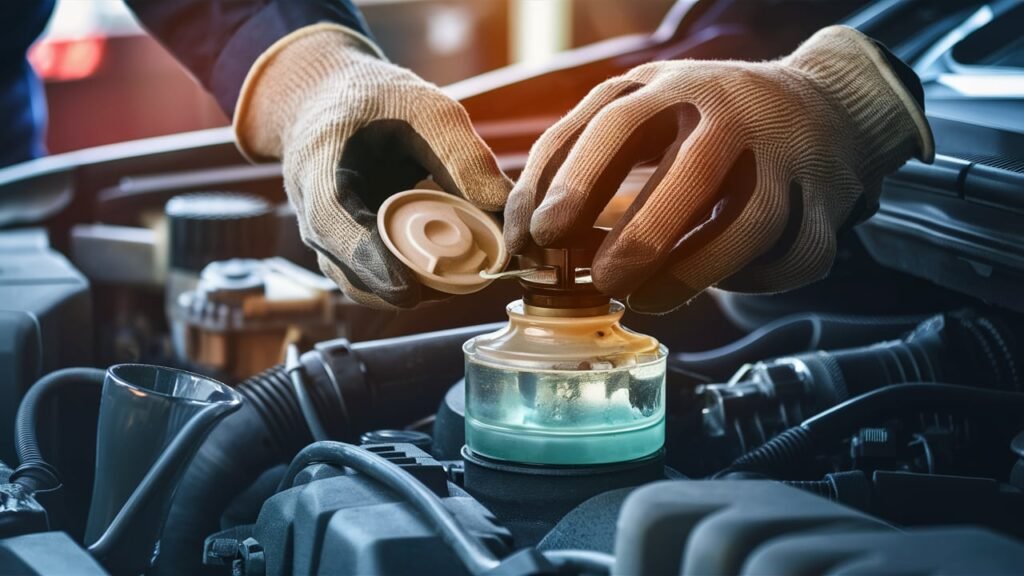
Unraveling the Mechanics of a Car Engine: A Comprehensive Guide
Understanding the intricate workings of a car engine is not just essential for mechanics and engineering students; it is a gateway to unlocking the driving force behind automotive marvels for enthusiasts and owners alike.
As we embark on unraveling the mechanics of a car engine in this comprehensive guide, we delve deep into the heart of vehicular power generation. By dissecting each component with precision and clarity, readers will gain a profound understanding of how these intricate pieces harmonize to propel vehicles forward.
This article serves as a beacon for those seeking mastery over the complexities that lie beneath the hood. From cylinders orchestrating controlled explosions to camshafts dictating precision in timing, we strip away the layers of mystery surrounding car engines.
Whether diagnosing an issue, enhancing performance, or simply nurturing an appreciation for automotive ingenuity, this guide caters to those hungry for technical knowledge. Let us embark on this enlightening journey through pistons, crankshafts, fuel injection systems, and coolant circuits to uncover the symphony of metal and combustion that powers our modern-day machines.
Understanding Car Engine Components.
To truly comprehend the intricacies of a car engine, one must grasp the fundamental components that work harmoniously to power vehicles. The core elements include cylinders, pistons, camshafts, and crankshafts, each playing a crucial role in the engine’s functionality.
Cylinders serve as chambers where combustion occurs, housing both pistons and valves responsible for intake and exhaust processes. Pistons move up and down within these cylinders, converting energy from expanding gases into mechanical motion.
Camshafts control the opening and closing of valves, syncing with the movement of pistons to ensure precise timing during combustion cycles. The crankshaft then transforms linear piston movement into rotational motion, transferring power to propel the vehicle forward. Understanding how these components interact is vital for diagnosing issues accurately and executing repairs effectively.
For instance, envision a scenario where a car owner experiences rough idling or reduced acceleration. By recognizing that such symptoms could stem from malfunctioning pistons or faulty valve timings due to camshaft issues, professionals can efficiently diagnose problems within the engine system.
When mechanics possess a comprehensive understanding of how cylinders house pistons that are intricately linked with camshafts and crankshafts in a synchronized dance of energy conversion, they can pinpoint root causes of performance discrepancies without unnecessary delays or misdiagnoses.

Hence, grasping the functions of these essential engine components becomes paramount in ensuring optimal performance and longevity of vehicles.
Furthermore, take the example of an engineering student delving into automotive design. A profound comprehension of how cylinders provide controlled spaces for combustion through coordinated piston movements regulated by camshafts can inspire innovative solutions in engine efficiency or emissions reduction strategies.
By studying these components comprehensively, aspiring engineers can tap into the potential for enhancing fuel economy or increasing power output through refined designs that optimize interactions between pistons and camshafts within the context of different engine configurations.
This knowledge empowers them to push boundaries in automotive technology by harnessing the foundational principles underlying engine operation at its core level.In conclusion, appreciating how cylinders house pistons driven by intricate mechanisms like camshafts and crankshafts unveils the underlying complexities behind every rev of an engine.
Whether it’s troubleshooting maintenance issues as a mechanic or conceptualizing groundbreaking advancements as an engineering enthusiast, mastering these key components illuminates pathways toward unlocking peak performance from car engines effortlessly.
Through seamless integration among cylinders, pistons, camshafts, and crankshafts within an engine system emerges a symphony of precision and power generation that drives innovation forward in automotive engineering realms worldwide.
Types of Car Engines.
Car engines come in various configurations, each designed to suit different performance needs and fuel efficiency requirements. Inline engines, also known as straight engines, are commonly found in many vehicles due to their simplicity and cost-effectiveness.
These engines feature cylinders arranged in a straight line along the crankshaft and offer good balance and smooth operation. On the other hand, V-type engines have a more compact design with cylinders positioned in a V-shape. This configuration allows for higher engine displacement and power output but may result in increased complexity.
Boxer engines, favored by manufacturers like Subaru, have horizontally opposed cylinders that move towards each other like boxers punching, which leads to better balance and reduced vibration.
Rotary engines, famously used by Mazda in models like the RX-series, feature a unique spinning rotor design instead of traditional pistons. While rotary engines are known for their high-revving nature and compact size, they can be less fuel-efficient compared to piston engines.
Electric motors represent the future of automotive propulsion due to their efficiency and eco-friendliness. Electric motors provide instant torque delivery, silent operation, and zero emissions – making them ideal for urban commuting and environmentally-conscious drivers.

The impact of choosing a specific engine type extends beyond mere performance; it influences factors such as vehicle weight distribution, driving experience characteristics, maintenance costs, and environmental footprint.
When considering performance requirements or fuel efficiency needs in selecting an engine type for a vehicle, it is crucial to weigh the advantages and disadvantages carefully. Each engine configuration comes with its unique set of characteristics that cater to different driving preferences and operational demands.
For instance, sports cars might benefit from the power delivery of V8 engines while city commuters could find electric motors more suitable for stop-and-go traffic scenarios.
Ultimately, understanding the working principles behind each engine type empowers automotive enthusiasts, engineering students, mechanics, and car owners to make informed decisions that align with their priorities related to vehicle performance and sustainability goals.
Internal Combustion Process.
The internal combustion process within a car engine involves a sequence of precisely timed events aimed at converting the potential energy stored in fuel into mechanical work. This intricate process begins with the intake stroke, where the piston moves downwards, drawing a mixture of air and fuel into the cylinder through the open intake valve.
Proper mixing and control of this air-fuel ratio are critical for efficient combustion and optimal power output. During the compression stroke, the piston moves upwards, compressing the air-fuel mixture to increase its temperature and pressure in preparation for ignition.
As the piston nears the top dead center, sparking plugs ignite the compressed mixture, initiating controlled explosions that force the piston back down during the power stroke. This downward movement translates into rotational motion through the crankshaft, which ultimately drives the vehicle’s wheels.
The exhaust stroke follows, expelling burnt gases from the cylinder as the piston moves upwards again. This cyclical process repeats continuously as long as there is fuel supply and spark to sustain combustion.
Optimizing this internal combustion process is crucial for maximizing engine efficiency and performance while minimizing emissions. Through precise control of factors like timing, air-fuel ratio, ignition timing, and valve operation, engineers can fine-tune engines to achieve specific power outputs and fuel economy targets.
For instance, advancements in fuel injection technology allow for more accurate fuel delivery based on driving conditions, enhancing both power generation and mileage. Understanding and manipulating these variables play a significant role in modern engine design and calibration.
Engine Lubrication System.
The engine lubrication system within a car plays a critical role in maintaining optimal performance and durability. This system typically consists of components such as the oil pump, oil filter, and intricate network of oil passages.
The primary function of engine lubrication is to reduce friction between moving parts by forming a protective film of oil, allowing components like pistons, crankshafts, and camshafts to operate smoothly without excessive wear. Proper lubrication not only enhances efficiency but also extends the lifespan of the engine.
Maintaining an effective lubrication system is essential for the overall health of the engine. Without adequate lubrication, metal-to-metal contact can occur, leading to increased friction, heat buildup, and premature component failure.

To ensure the longevity and performance of the engine, regular maintenance practices are crucial. This includes routine oil changes based on manufacturer recommendations to prevent old or contaminated oil from causing damage. Additionally, monitoring oil levels and quality is vital to address any leaks or issues promptly.
Imagine the engine as a well-coordinated symphony where each component must harmonize seamlessly for optimum performance. Just like how musical instruments require proper care and tuning to produce beautiful melodies reliably over time, so does an engine necessitate diligent attention to its lubrication needs.
By adhering to recommended maintenance schedules and using high-quality oils suited for specific engines, enthusiasts can guarantee that their beloved vehicles continue running smoothly mile after mile.
Cooling System in Car Engines.
The cooling system of a car engine is a crucial element in its overall functionality, ensuring that the engine operates within optimal temperature ranges to prevent overheating. Key components of the cooling system include the radiator, water pump, thermostat, and coolant.
The radiator acts as a heat exchanger, dissipating the heat generated by the engine during combustion. The water pump circulates coolant through the engine and radiator to absorb excess heat and maintain proper operating temperatures. The thermostat helps regulate the flow of coolant based on the engine’s temperature requirements, ensuring efficient cooling.
Understanding how the cooling system functions is essential for maintaining an engine’s health and performance. Without proper cooling, engines can overheat, leading to severe damage such as warped cylinder heads or even complete engine failure.
Regular maintenance practices like checking coolant levels, inspecting hoses for leaks, and ensuring proper airflow to the radiator are vital to preventing cooling system malfunctions. Being proactive about addressing any issues with the cooling system can save car owners from costly repairs down the line.
For example, imagine driving up a steep mountain road on a hot summer day without a properly functioning cooling system. As the engine works harder to climb the incline, heat generation increases significantly. Without an efficient cooling system in place, this intense heat buildup can quickly cause critical components to fail due to overheating.
By understanding how each component of the cooling system contributes to managing thermal loads effectively, car owners can take preemptive measures to ensure their engines remain cool under challenging conditions.
Fuel Injection Systems.
Fuel injection systems have revolutionized the way modern car engines deliver fuel to the combustion chamber, leading to improved efficiency and performance compared to traditional carburetors. Two common types of fuel injection systems found in vehicles are port fuel injection (PFI) and direct fuel injection (DFI).
In PFI systems, fuel is injected into the intake ports before reaching the combustion chamber, allowing for precise control over the air-fuel mixture. DFI systems, on the other hand, inject fuel directly into the combustion chamber, enhancing combustion efficiency and power output.
The shift from carburetors to fuel injection systems has brought several advantages. Fuel delivery in injection systems is more precise, ensuring optimal air-fuel ratios under varying driving conditions.
This precision leads to better fuel efficiency and reduced emissions, making modern engines more environmentally friendly. Additionally, fuel injection allows for faster response times and improved throttle control compared to carburetors, translating into enhanced engine performance and overall driving experience.
Proper tuning and maintenance of fuel injection systems are crucial for maintaining optimal engine performance. Regular inspection of injectors, fuel filters, and sensors can help prevent issues like clogging or misfiring that may compromise engine efficiency.

Tuning adjustments such as optimizing injector timing or adjusting air-fuel ratios can further enhance combustion control and power output. By staying proactive with maintenance practices specific to fuel injection systems, car owners can ensure consistent performance and longevity of their engines.
In conclusion, understanding the intricacies of different types of fuel injection systems is essential for maximizing engine efficiency and performance in modern vehicles. By embracing advancements in technology that prioritize precise fuel delivery and combustion control, car enthusiasts will appreciate enhanced driving experiences while mechanics benefit from easier diagnostics and maintenance procedures.
As automotive engineering continues to evolve, mastering the complexities of fuel injection technology remains a fundamental aspect of unraveling the mechanics of a car engine for enthusiasts and professionals alike.
Conclusion.
In conclusion, a deep understanding of car engine mechanics is paramount for automotive enthusiasts, engineering students, mechanics, and car owners alike. This comprehensive guide has meticulously dissected the intricate components of a car engine, from cylinders to cooling systems, shedding light on how these elements function cohesively to power vehicles.
By emphasizing the significance of grasping these fundamental principles, this article equips individuals with the knowledge necessary to diagnose issues accurately and maintain engines efficiently.
Through exploring the types of car engines, internal combustion processes, lubrication systems, cooling mechanisms, and fuel injection technologies in detail, this guide offers a robust foundation for anyone seeking to delve into the heart of automotive machinery.
As enigmatic as car engines may seem at first glance, uncovering their mechanics reveals a world of precise engineering and interconnected systems that ultimately drive motion. Thus, by unraveling the complexities within a motor vehicle’s core, enthusiasts and practitioners can embark on a journey towards mastering one of the most critical components in modern transportation technology.




